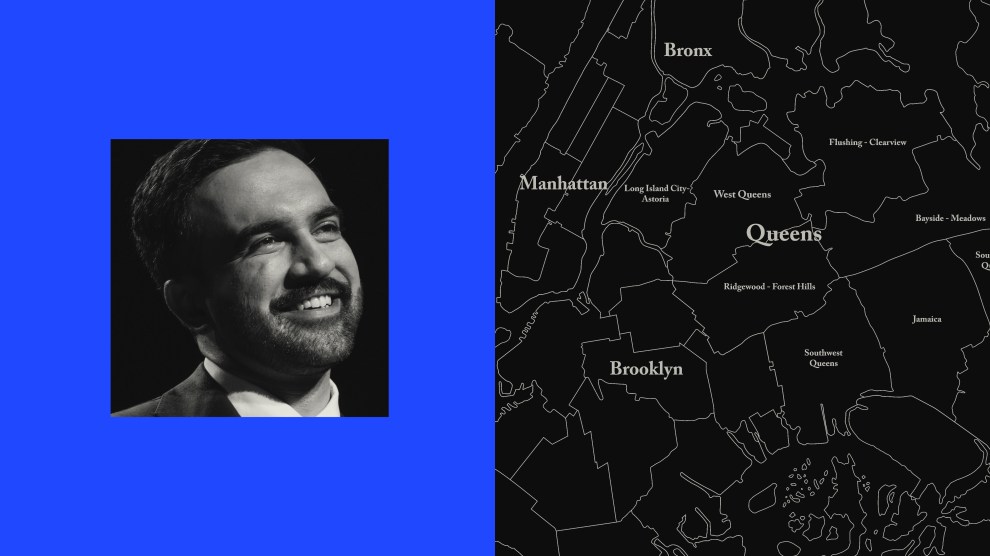
Standing in the center of Ho Chi Minh City’s wholesale tobacco market, a visitor to Dang Dieu Hy’s store can easily count about three dozen different brands of cigarettes, most in low-budget packages produced by Vietnam’s state-owned tobacco company.
Yet, throughout the market, two color schemes dominate. Both are from foreign brands: the red-and-white chevron of Philip Morris’ Marlboro and the regal gold-on-blue of State Express 555, made by British American Tobacco (BAT). This color coding leads visitors straight down Hoc Lac Street to Hy’s store, an entire building painted a blinding red. Inside, as the Marlboro Man squints down from a poster, Hy stands serenely amid the commotion. Stylishly dressed, a cellular phone pressed to one ear, she sends her employees scrambling off to prepare orders. Some of the packages are Marlboros that have been processed and packaged in a factory in Vietnam. Others are contraband, marked with the telltale “Made in U.S.A.”
Hy remains unfazed when asked about the smuggled packs and refuses to say how she obtained them. She also says she isn’t worried about getting caught. “The police only catch the smugglers at the border,” she says. “They have no right to interfere in the market. Besides, we can negotiate with them, once in a while paying bribes.” After all, her cash business is bustling (behind the counter she keeps a stack of currency roughly 8 inches high).
For Philip Morris, which designed the shop, painted it, and maintains it, Hy plays a crucial role, providing a center of commerce. Philip Morris and other foreign tobacco companies vehemently deny critics’ accusations that they play a role in smuggling the vast quantities of cigarettes making their way across the border. They claim smuggling actually hurts profits, forcing them to compete with themselves. But the contraband also provides Western companies the undeniable benefit of making the product more visible, which is important because their short-term goal isn’t to dominate the Vietnamese cigarette market. They’re focused on selling something much more important: their brand. And for Philip Morris, that means selling America.
As Taylor Meloan, professor of marketing at the University of Southern California and author of International and Global Marketing, sees it, “[Vietnamese] want the American dream, the American lifestyle, the American way of doing things. We are no longer the ugly Americans,” he says. “We are the Americans that live the good life, and when people buy a piece of America they are buying a piece of our lifestyle.”
Foreign brands currently constitute only about 15 to 18 percent of Vietnam’s cigarette market, according to figures from the U.S. Department of Agriculture. The rest is satisfied by the more than 80 brands produced by the country’s own Vinataba tobacco company and several local producers. Domestic cigarettes typically sell for 10 to 50 cents a pack, while the Western brands are priced from 70 cents to just under $1.
Nearly three-quarters of the men in Vietnam smoke, according to a study published in the Journal of the American Medical Association. That’s the highest rate of male smoking in the world, making the nation, with a population of 75 million, a prized market. According to projections by the World Health Organization (WHO), annual smoking-related deaths will rise worldwide from the current 3.5 million (one-third of them in Third World countries) to 10 million over the next two decades (7 million in the Third World).
Meanwhile, tobacco consumption continues its gradual decline in the United States (from an all-time high of 42.4 percent in 1965 to 24.7 percent in 1995, the most recent year for which data is available). In its search for new consumers, the tobacco industry has pinned its greatest hopes on Asia, which boasts nearly 60 percent of the world’s population. As a Tobacco Reporter editorial put it: “The future is Asia.”
Accordingly, Western brands have swept in with an aggressive marketing campaign based on a simple logic: Even if the people can’t afford the higher-priced cigarettes right away, they can start wanting them now.
Over the past decade, Vietnam has tried to build a line of defense against the rising incidence of smoking. Since 1990, the government has tightened its ban on imports of U.S. and foreign cigarettes, prohibited tobacco advertising, and banned smoking in many public places — including hospitals, meeting halls, theaters, and aboard buses and planes. And many local bodies have placed additional restrictions on cigarette promotion, and numerous workplaces, ministries, and local people’s committees have forbidden or regulated smoking. Once a year, with the help of Canadian and American health experts and WHO, the government promotes anti-smoking events during a weeklong burst of activity surrounding World No-Tobacco Day on May 31.
The slight, soft-spoken physician with the unwieldy task of directing the country’s anti-smoking efforts is Tran Thu Thuy, a government health official who oversees the Vietnam Committee on Smoking and Health (Vinacosh). Over tea, she plainly admits that Vietnam is starting late with its public health campaign against tobacco. “We are not experienced in this kind of work,” she says, noting that the country has done little research on the incidence, distribution, and control of tobacco-related diseases in Vietnam, or on the cost to the country in lost productivity and medical expenses. It was this last point that helped turn U.S. political and public opinion against the tobacco industry, particularly after several states launched successful legal battles in 1996 to recoup billions of dollars in Medicaid expenses from tobacco-related illnesses.
Vinacosh is poorly funded — it received just 100 million dong (about $7,000) in government funds for its 1997 activities — making it impossible to launch any type of widespread media effort, or anything resembling a modern television and radio public service announcement. A draft tobacco policy report from the Ministry of Health states gloomily: “Neither government funds or any other financial resources have been available for carrying out comprehensive and systematic information-education-communication activities against smoking.”
Vietnam requires only vague warning labels on cigarette packs (“Smoking Is Dangerous to Health”), and while Vietnam’s media frequently cite information about tobacco-caused illnesses, the news reports are dry and stale, making them easy to ignore. There are also no restrictions on the sale of cigarettes to children. “Fathers ask their sons to bring cigarettes to them,” Thuy says.
Meanwhile, looming over Vietnam’s anti-smoking efforts are concerns that ongoing trade talks between the United States and Vietnam could lead to the repeal of some restrictions. An official at the U.S. embassy in Hanoi, for example, suggests that the cigarette import ban might become a casualty. David Wilson, the spokesman for BAT in Vietnam, says that by 2006, when Vietnam has to be in compliance with the trade rules that govern the Southeast Asian nations bloc, the ban might crumble. And a recent congressional attempt to permanently ban U.S. trade negotiators from representing tobacco interests and prohibit U.S. tobacco companies from marketing to children overseas has failed. Rep. Lloyd Doggett (D-Texas), who wrote the legislation, blames its failures on powerful tobacco industry lobbyists in Washington. “It’s probably a bad choice of words, but they are able to choke off any attempts at legislation in committee,” he says.
In much of Vietnam, meanwhile, people tend to respond to warnings against smoking with indifference rather than outrage or suspicion. The public’s attitude comes across loud and clear at Hanoi’s Noi Bai Airport, where two men puff away in the waiting lounge, right underneath the No Smoking signs.
At the Thang Long cigarette factory in Hanoi, heavily damaged by a U.S. air strike in 1967, Nguyen Tien Dung, a Vinataba official and vice director of the plant, explains the company’s policy. “We pay attention to the consumer, to his health, with the knowledge that cigarettes are harmful,” he says. “But the demand exists and is stable. If we do not supply it locally, then this demand will be filled by [smuggled] foreign cigarettes.”
Yet, in compliance with government anti-smoking policy, Vinataba does no advertising or promotion. The price, too, is carefully regulated, and the government increases cigarette taxes whenever the Ministry of Health suggests that demand is too high and tobacco consumption needs to be curtailed.
As in other Asian countries, including China, South Korea, and Thailand, the existence of a state-owned quasimonopoly can give the government significant leverage against multinationals such as Philip Morris and BAT. Tobacco critics actually view such state-run companies as awkward allies. “I think public health is served by clunky, inefficient national monopolies that keep prices high and don’t engage in aggressive marketing techniques,” says Neil Collishaw, a scientist and senior staff member at WHO’s Tobacco-Free Initiative. “Plus, as a government agency, they are more likely to cooperate with the health ministries in trying to reduce the prevalence of smoking.”
Though Vinataba might cooperate with tobacco-control efforts, they are hardly going to encourage tobacco eradication. After all, the tobacco industry is profitable for Vietnam, with tobacco taxes making up 3.2 percent ($110 million) of the national budget as recently as 1994.
That year, however, Vietnam made what health advocates would describe as a Trojan horse-style error. The country entered into production agreements with Philip Morris, Rothmans of Pall Mall, and BAT to produce and sell their premium brands in Vietnam, using Vinataba facilities. Vietnam also launched a joint venture with R.J. Reynolds in Da Nang. In a stroke, Madison Avenue took over Hoc Lac Street.
Too late, Hanoi tried to stem the tide. In late ’94, the Vietnamese government strengthened its ban on tobacco print and electronic media ads and billboards, which it has since supplemented with a series of decrees limiting cigarette vendors. With some understatement, the Ministry of Health reported in a strategy paper, “It is likely that the introduction of the transnational tobacco companies in Vietnam through joint ventures promoted smoking via more active and sophisticated forms of marketing techniques.
“Together with increased smuggling of cigarettes, the use of tobacco increased,” concluded the report. “The ban on tobacco advertising has not been completely effective, [and] tobacco sponsorship of dances, disco, and the distribution by young women has not been affected.”
Despite regulations imposed by Hanoi and local jurisdictions, the foreign tobacco companies are still able to promote themselves. In convenience stores, markets, and cafes, posters and point-of-sale displays trumpet the Marlboro, Dunhill, and 555 brands. They are seemingly everywhere: In Hanoi and Ho Chi Minh City, almost every corner boasts a street vendor with a trolley cart, the bottom half of which carries the logo of one of the premium foreign brands, while on top are stacked carton upon carton of cigarettes. In Ho Chi Minh City alone, according to the Tobacco Reporter, there are more than 2,000 such trolleys. Typically, the owner gets the cart free from the company, plus a payment of 100,000 Vietnamese dong per month — about $7 (the World Bank places the annual per capita income at $320) — and a busy network of runners keeps carts supplied with a stock of cigarettes from company warehouses and places like the Hoc Lac market.
Along a single block of Trieu Viet Vuong Street in Hanoi, various cafes, inns, and nightspots sport garish Marlboro colors and, inside, display posters of the Marlboro Man. Many are regularly visited by a minivan — also red and white and bearing the Marlboro name — that disgorges attractive young women wearing red and white, who approach male customers with free packs of cigarettes.
“The Challenge” is one of Marlboro’s most successful promotions, whose placards are seen widely in and around Vietnam’s major cities. By collecting a certain number of empty Marlboro packages, participants can earn binoculars, watches, radios, knives, backpacks, caps, and T-shirts. Local anti-smoking activists say “The Challenge” is popular with children, who scavenge for discarded cigarette boxes.
Philip Morris denies that it targets children in Vietnam or any other part of Asia. “We don’t do that,” says Don Harris, vice president for Philip Morris Asia, which is based in Hong Kong. “We have a very extensive youth no-smoking program throughout Asia.” These programs in Vietnam, however, are limited to training programs aimed at retailers, Harris says. He also maintains that “The Challenge” is open only to people over 18, who “have to verify their age with some sort of documentation.”
But the tobacco policy draft report from Vietnam’s Ministry of Health tells another story. At the 1998 Hanoi Tet festival (a national New Year’s celebration), it reports, Philip Morris had “a large tent with Marlboro horses to ride on for children, and young, nicely dressed cowboy girls offered single cigarettes free of charge to young boys.”
“When it comes to advertising, there are two issues: what’s on the statute books and what’s actually implemented,” says Wilson, the BAT spokesman, speaking in his Ho Chi Minh City office.
BAT has more than a century of experience in Asia, especially in China. There, according to Ashes to Ashes, Richard Kluger’s Pulitzer Prize-winning history of the tobacco industry, the company used “ruthless pricing practices, dubious legal maneuvers, and purchased political influence” to establish market dominance. In South Vietnam, BAT also had a strong presence until 1975, when the Viet Cong overran Saigon and seized the company’s factory there. “A lot of the equipment Vinataba is using is old BAT equipment that they took over in ’75,” says Wilson matter-of-factly. Today, BAT pays the Vietnamese government for the right to use its more modern production facilities for its State Express 555 brand, manufacturing them at the old Saigon Cigarette Factory — a factory it used to own. A hollow victory, but a victory nonetheless.
But manufacturing cigarettes in Vietnam is not as difficult for BAT as selling them, Wilson says. Throughout the country, regulations vary. “People on one side of the street do one thing, and people on the other side do another,” he says. For instance, in some areas of Ho Chi Minh City, BAT believes it is able to use its name on the trolleys that carry its product, while in others it resorts to trolleys that bear only 555’s futuristic logo without the product’s name.
Philip Morris resorts to a similar strategy. In many urban neighborhoods, the unmistakable, craggy features of the Marlboro Man appear alone, without the Marlboro name but with varying slogans. Under one familiar portrait is the slogan, “The strength of self-confidence.” Elsewhere, Philip Morris relies solely on the red-and-white chevron that also adorns the Marlboro package, and displays it on trolleys and umbrellas.
Still, BAT and Philip Morris acknowledge that most Vietnamese cannot afford the premium prices for the 555 and Marlboro makes, opting instead for the lower-priced Vinataba brands.
“The consumer who buys 555 is primarily [from] the rising middle class, perhaps for conspicuous consumption purposes,” says Wilson. They might, he explains, be able to afford one or two of the cigarettes a month, buying them for special occasions. “The aspirational elements of the brand are very strong. By the middle of the next decade, we anticipate that the premium segment will double in size.”
The high-powered marketing efforts in Vietnam seem significantly out of proportion to the limited number of Marlboros and 555s being sold. So far, high-end cigarettes represent only about 4 to 6 percent of the market, and Marlboro represents only a tiny piece of that small share. That leads critics to suggest that the companies’ real intent in promoting so aggressively could be to create a demand for smuggled cigarettes.
Many Vietnamese think foreign-made brands are of a higher quality than domestic ones, though Philip Morris insists that the Marlboros made in Vietnam are manufactured to exacting standards that make them the equivalent of Marlboros anywhere. Still, Philip Morris’ Don Harris admits the attractiveness of the smuggled version. “It’s an American product,” he says. “And there is some cachet in ‘Made in the U.S.A.'”
Yet worldwide, the tobacco industry faces criticism for doing little or nothing to prevent smuggling. WHO estimates that 30 percent of all cigarettes (355 billion) in international trade end up being smuggled across borders, from Asia to Latin America to Canada.
According to Judith Mackay, chair of WHO’s global anti-tobacco program, the smuggling process begins when tobacco companies sell cigarettes in bulk to middlemen in Hong Kong and Singapore. Some of these distributors maintain ties to or are controlled by triads, powerful organized crime groups in Asia. The triads, in turn, organize the smuggling channels.
The companies deny any connection to the smuggling, although in a widely publicized case in Hong Kong this year, a former BAT official was jailed and later fined after being found guilty of receiving million-dollar bribes from a cigarette distributor in exchange for a supply of duty-free cigarettes, according to the South China Morning Post. Ultimately, the judge who presided over the case thought BAT should share the blame, saying, according to the Post: “In my view the tobacco companies were clearly putting their commercial interests above whatever moral duty they may have towards our society and to some extent such irresponsible behavior amounted to assisting criminals in transnational crime.”
Not only do smuggled cigarettes indirectly funnel sales and profits into the companies’ worldwide operations, but smuggling has an additional benefit: It puts tremendous pressure on countries such as Vietnam to relax or eliminate their bans on cigarette imports. An estimated 10 percent of Vietnam’s demand for cigarettes is met by smuggled varieties, and they can be found everywhere.
Le The Bao, an official with the Ministry of Trade’s vice department, says the country is mobilizing border guards, police, and a special unit of the Trade Ministry to coordinate anti-smuggling efforts, fight corruption, and patrol highly porous land and sea borders.
The smugglers are often Vietnamese hill country and border peasants who carry illegal smokes across from Cambodia and Laos, just as, a generation ago, Viet Cong soldiers and porters hauled rice, arms, and ammunition down the Ho Chi Minh Trail. Bao says the government is hoping to remove the incentive for the cigarette traffic by providing capital and employment opportunities to farmers in the border regions.
Nevertheless, you can find illegal cigarettes everywhere in Vietnam, even at the high-profile cigarette shops that ring Hoan Kiem Lake under the shadow of the Ministry of Trade. Though he refused to disclose details, Bao said his government would announce new restrictions on cigarette retailers by year-end to crack down on the sale of smuggled tobacco.
More than 1,000 miles north of Hoc Lac Street, in the southern district of Hanoi, is Bach Mai, the country’s largest hospital. Like much of Vietnam’s infrastructure, it is old and crumbling. Flakes of paint peel from the walls, and the tiles underfoot are sooty and cracked. In 1972, American warplanes devastated the hospital in the famous Christmas bombing, and evidence of the destruction still remains. Thirty doctors, nurses, and patients died that day as hundreds more huddled in underground tunnels that now store medical supplies.
Dr. Bui Huy Phu barely escaped death that day at Bach Mai, and now he directs the hospital’s respiratory disease center. A gentle man with a wry smile, he has intense, inquiring eyes. When asked if he has the resources he needs to treat the increasing number of patients with tobacco-related illnesses, he looks up at a crack that branches across the ceiling. “Sometimes the ceilings fall down,” he says.
“Sixty to 70 percent of the patients here are smokers, most of them men,” he continues. “Within the last five years, almost all of the lung cancer patients, 87 percent, have been smokers, and we are seeing more and more of them.” Just then, seemingly on cue, a colleague rushes in with an X-ray that reveals a tumor the size of a grapefruit in the right lung of one patient. “A smoker,” Phu tells the visitor. “With very early cancers, we send them to the cancer hospital. [Others] with more advanced cancers, we send home. We cannot treat them.”
Statistics on cigarette consumption are elusive in Vietnam. But smoking rates are clearly climbing. In 1996, Vietnam produced 30 billion cigarettes, up from 24.6 billion in 1992 — and this, of course, does not include the millions of cigarettes smuggled into the country. Several studies have begun, in part to spur the government to stronger action against tobacco. For example, in Can Tho province, nestled along the Mekong Delta southwest of Ho Chi Minh City, a major study of the links between smoking and chronic lung diseases is under way.
There’s also the possibility that a grassroots movement against the tobacco industry — like the one in the United States — will catch on. But for now, in a country desperate for international respect and eager to embrace all that is American, such a rebellion seems all the more unlikely.
What grassroots opposition does exist comes from young idealists such as Tran Thu Ha and her colleagues at the Research and Training Center for Community Development (RTCCD), a nonprofit group founded in Hanoi in 1996 and supported by grants from Canada, Holland, and Japan. Ha graduated in 1997 from Hanoi National University, where she studied English and Chinese. She has spent the last year coordinating an anti-tobacco project for the RTCCD. With a budget of just $5,000 to $7,000, the group creates posters and stickers it distributes to schools, hospitals, and government offices.
Earnest, with a civility reminiscent of the early women’s temperance movement, the group has produced one sticker that reads: “Be Polite — Don’t Smoke!” It’s a far cry from U.S. anti-smoking tactics like the ongoing series of spots on Massachusetts television that document a woman dying from emphysema.
Like many in Vietnam, Ha worries that Vietnamese women will take up smoking. “Many Vietnamese women are being attracted by inducements from Western tobacco companies,” she says.
In Vietnam, women are the next, potentially huge untapped market. Only 4 percent of women smoke in Vietnam, compared to 73 percent of men. While advertising restrictions make it difficult for tobacco companies to target women, there are other ways to promote a brand while not promoting a product. Ha says she has seen silk purses emblazoned with the Marlboro Man. And Philip Morris, of course, has its army of cigarette girls at cafes and clubs.
Like much of the tobacco marketing, this latest attack has left health experts and anti-smoking activists scratching their heads, wondering what they can do to counter such a campaign. Ha’s group has had to resort to such basic, if touchingly naive, approaches as peer pressure: When she and her colleagues see a woman smoking, she says, “We stare at her.”
Meredith Nicholson provided additional reporting for this story.

















